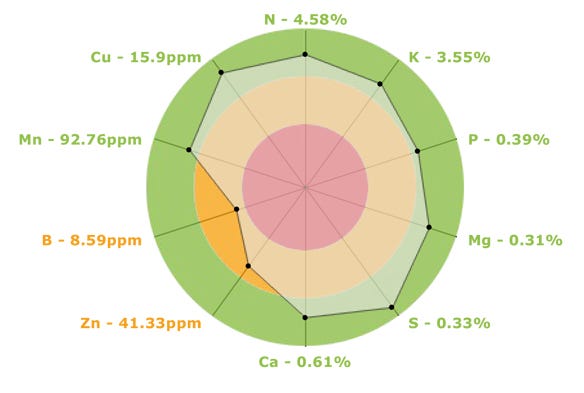
Tissue sampling at three key times in corn’s growth cycle was introduced into the Corn Watch project in 2020. The first round of tissue testing for 2021 is in the books.
“It’s another tool that gives us insight into what nutrients plants could access at a given time,” says Dave Nanda, director of research for Seed Genetics Direct, sponsor of Corn Watch ’21.
Related: Follow step-by-step procedure in corn scouting
“Pulling tissue samples at key times during the season allows you to get a better picture of nutrient levels within plants.”
Pulling samples
If you’re only sampling three times, the first time to pull leaf samples is at the five-leaf stage, says Betsy Bower, an agronomist with Ceres Solutions in west-central Indiana. Like last year, Ceres Solutions is providing sampling materials and covering costs for tissue sampling for Corn Watch ’21.
Pull 25 leaves at random within the designated sampling area. At V5, pull the uppermost leaf with a collar. It’s important to wait until V5 to pull the first sample, Bower says, because then permanent roots are functioning.
Half the Corn Watch ’21 field is conventional tillage after soybeans and half is no-till into soybean stubble. Samples were pulled on both sides of the field. Leaves were placed inside sampling envelopes and shipped immediately to SureTech Labs in Indianapolis.
Evaluating results
Bower received results and forwarded them to Corn Watch organizers in just over 36 hours after samples were pulled. She commented on results from both samples.
Here is a graphic depicting the conventional-tillage sample results:

“For the conventional-tillage sample, potassium was a little low,” she noted. It was also low in the Corn Watch field a year ago and was one reason the grower elected to make foliar applications in some fields in 2021.
“Phosphorus was low, but it could just be an artifact of cold early growing conditions,” Bower says. “It will get better. The nitrogen-to-sulfur ratio was a little wide. Corn was looking for sulfur to make more protein. Boron and manganese were also a little low.
“The first thing to fix would be sulfur. There are foliar sulfur products. Then I would look at foliar boron and manganese.”
Results from the no-till sample depicted a different scenario. “Based on this sample, it looks beautiful nutrition-wise,” Bower says. “I would not do a thing currently.”
Here is a graphic showing the no-till sample results:

Bower suspected the no-till corn might be smaller, and it likely was marginally smaller, organizers say. Growth stage was early V5 vs. early to mid-V5 on conventional corn. From earlier observations, the no-till side began emerging a day later, and a larger percentage emerged over a longer time frame compared to the conventional side. Bower notes that sometimes smaller corn may not be showing nutritional needs yet, while larger leaves are calling for more nutrients.
More sampling
The next step in monitoring progress will be pulling another sample at V9 to V12. In 2020, this sample was pulled at V12, with the top leaf with a collar pulled for sampling.
A third sample was pulled in the reproductive phase in 2020 and will be pulled again this year. Twenty-five ear leaves will be collected at random. That sample provides information on what the plant sees at the beginning of grain fill.
All subsequent samples will be pulled on both conventional and no-till corn to monitor progress since the first report.
About the Author(s)
You May Also Like




